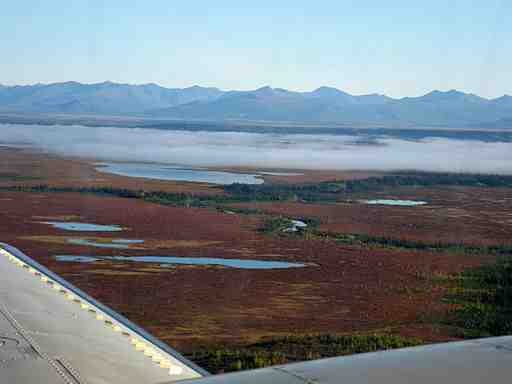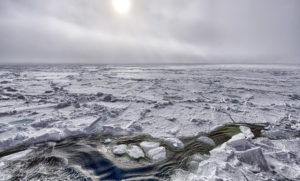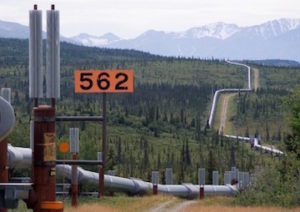Lakes Raise New Question on Arctic Warming
Research into the lakes that form when permafrost melts challenges the widely held view that they are contributing to Arctic temperature rise by releasing carbon into the atmosphere.
By Alex Kirby, Climate News NetworkThis piece first appeared at Climate News Network.
LONDON — Scientists say there is uncertainty over a previously unquestioned assumption about the way in which temperatures are rising in the Arctic.
New research, supported by the US National Science Foundation (NSF), suggests that a rethink is required on the widely-held scientific view that thawing permafrost uniformly accelerates atmospheric warming.
Instead, the scientists say, their findings show that one type of Arctic lake stores more greenhouse gases (GHGs) than it emits into the atmosphere.
But they say the effect is unlikely to be permanent, because increasing Arctic warmth will probably lead to the renewed release of the gases stored in the lakes.
Melted fresh water
The study, published in the journal Nature, focuses on thermokarst lakes, which appear as permafrost thaws and create surface depressions that fill with melted fresh water, converting previously frozen land into lakes.
The research suggests that Arctic thermokarst lakes are “net climate coolers” when observed over millennial timescales.
The Arctic is one of the fastest-warming regions on Earth. Sea ice has been retreating in the last 30 years or so by 12% a decade, NASA says, and spring and autumn on the Greenland icecap have warmed by more than 3°C.
But the new research suggests the lakes have not been contributing to this recent warmth, although thousands of years ago they did release GHGs.
“Until now, we’ve only thought of thermokarst lakes as positive contributors to climate warming,” said lead researcher Katey Walter Anthony, who is associate research professor at the University of Alaska Fairbanks Institute of Northern Engineering.
“It is true that they do warm climate by strong methane emissions when they first form, but on a longer-term scale they switch to become climate coolers because they ultimately soak up more carbon from the atmosphere than they ever release.”
The team found, thermokarst lakes in ice-rich regions of North Siberia and Alaska began cooling about 5,000 years ago. They stopped emitting methane and carbon dioxide, and instead started storing CO2 from peat-rich sediments.
The researchers used published data, their own field observations of Siberian permafrost and thermokarsts, radiocarbon dating, atmospheric modelling and spatial analyses to study how thawing permafrost is affecting climate change and GHG emissions.
Over the millennia, they say, several factors stimulated high rates of carbon deposits in lake sediments. These included thermokarst erosion and accumulations of organic matter, nutrient release from thawing permafrost, and slow decomposition in cold lake bottoms that lacked oxygen.
Carbon uptake
The study’s co-author, Miriam Jones, of the US Geological Survey, said: “These lakes are being fertilized by thawing yedoma permafrost [a type of permafrost rich in organic material]. So mosses and other plants flourish in these lakes, leading to carbon uptake rates that are among the highest in the world, even compared to carbon-rich peatlands.”
The study also found that when the lakes drain, previously thawed organic-rich lake sediments freeze again, storing a large amount of carbon processed in and under thermokarst lakes.
But the researchers say the new carbon storage will not last indefinitely. Future warming will probably start re-thawing some of the permafrost and release some of the carbon it contains.
Roughly 30% of global permafrost carbon is concentrated within 7% of the permafrost region in Alaska, Canada and Siberia. The study has expanded estimates of how much carbon the circumpolar peat stores in permafrost regions by more than 50%.
And it leaves scientists puzzling over a further question. The thermokarst lakes, according to this study, have been storing GHGs, not emitting them. So what else, despite that, is continuing to warm the Arctic faster than most of the rest of the planet?
Your support matters…Independent journalism is under threat and overshadowed by heavily funded mainstream media.
You can help level the playing field. Become a member.
Your tax-deductible contribution keeps us digging beneath the headlines to give you thought-provoking, investigative reporting and analysis that unearths what's really happening- without compromise.
Give today to support our courageous, independent journalists.






You need to be a supporter to comment.
There are currently no responses to this article.
Be the first to respond.